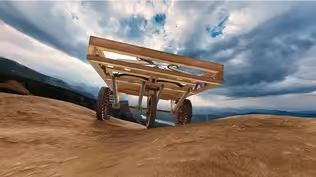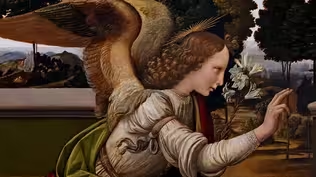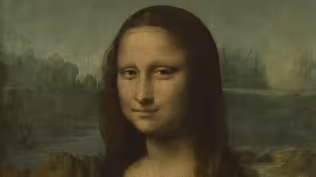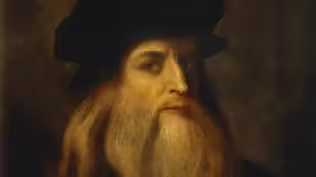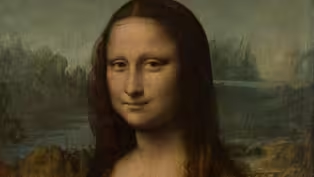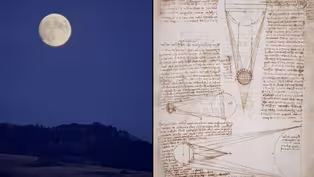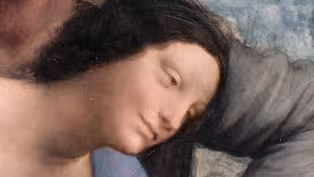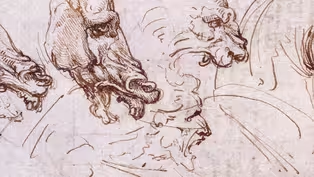
Leonardo da Vinci Investigates the Human Body
Clip: 11/19/2024 | 7m 22sVideo has Closed Captions
Leonardo da Vinci’s study of human anatomy combine scientific exploration with expert artistry.
Leonardo da Vinci resumes his investigation into human anatomy, merging rigorous scientific exploration with expert artistry. The scope of his studies grew, and he strove to describe human anatomy from the fetus to the fully grown man and women – their proportions, skeletal framework, muscular systems, and the nature of the senses.
Problems playing video? | Closed Captioning Feedback
Problems playing video? | Closed Captioning Feedback
Corporate funding for LEONARDO da VINCI was provided by Bank of America. Major funding was provided by the Corporation for Public Broadcasting, and by The Better Angels Society and by...

Leonardo da Vinci Investigates the Human Body
Clip: 11/19/2024 | 7m 22sVideo has Closed Captions
Leonardo da Vinci resumes his investigation into human anatomy, merging rigorous scientific exploration with expert artistry. The scope of his studies grew, and he strove to describe human anatomy from the fetus to the fully grown man and women – their proportions, skeletal framework, muscular systems, and the nature of the senses.
Problems playing video? | Closed Captioning Feedback
How to Watch Leonardo da Vinci
Leonardo da Vinci is available to stream on pbs.org and the free PBS App, available on iPhone, Apple TV, Android TV, Android smartphones, Amazon Fire TV, Amazon Fire Tablet, Roku, Samsung Smart TV, and Vizio.
Buy Now
Providing Support for PBS.org
Learn Moreabout PBS online sponsorshipNarrator: One day, Leonardo visited the hospital of Santa Maria Nuova, where, for years, he had stored drawings, manuscripts, a collection of books, and his savings.
On this day, he was there to see a patient.
Man as Leonardo: The old man, a few hours before his death, told me he was over 100 years old, and that he felt nothing physically wrong with him except weakness.
Thus, sitting on a bed in the hospital of Santa Maria Nuova in Florence, with no other movement or sign of suffering, he passed on from this life.
And I dissected his body to see the cause of this gentle death.
Narrator: It had been nearly two decades since Leonardo's initial attempt to map the human body-- an effort that had resulted in a revolutionary study of the human skull and an illustration that would become one of the best-known drawings ever made-- "The Vitruvian Man."
His preoccupation with the human figure-- and insistence that the painter know both its outer and inner form-- had never waned, but his concept of the nervous and circulatory systems was still heavily influenced by the Greek physician Galen, whose inaccurate theories on blood flow and respiration remained widely accepted more than 1,500 years after his death.
♪ Man: Galen was a second-century physician, and he wrote widely on the subject.
These form the basis of understanding of anatomy, physiology for the next nearly 1,600 years.
And that was that the blood was made in the liver continuously and the heart basically was there to churn the blood and to heat it, and it communicated with the airways directly, so it'd get rid of the evil spirits and so forth.
Narrator: Doctors in Bologna had performed public dissections on the bodies of condemned criminals for their students since the early 1300s.
For Leonardo, the practice offered him an opportunity to merge rigorous scientific exploration with expert artistry, and to challenge Galen's uncontested views.
♪ [Bramly speaking French] Narrator: He depicted the blood vessels of the old man's neck, thorax, and upper torso and the nerves and blood vessels of his head.
Then he moved to the abdominal organs-- stomach, liver, bladder, and kidneys.
He made notes on the colon and intestines, and the heart's importance in heating the blood-- a theory of Galen's which would prove to be incorrect.
And, once again, he looked to nature to help him make sense of his discoveries, comparing the arteries and veins to tree branches, and the heart to the seed from which the tree springs.
Man as Leonardo: Why the veins of old people become so long, and become sinuous when they used to be straight, and the walls become so thick that it prevents the motion of the blood.
This causes the death of the elderly without disease.
And what he got out of that dissection was astonishing.
He said, "I could see that the artery "that surrounded the heart was silted up, and this is like a river."
♪ And he knew as a canal engineer, a river engineer, if it silted up, then it didn't flow properly, and it causes all sorts of trouble.
So, the old man died from having a silted-up system of blood vessels.
Wells: And from that, he makes the first description of coronary atherosclerosis in the world.
And it isn't just the chance, you know, "By the way, this is what killed him."
He goes on to describe in several places the tortuosity of the vessels and "I want to dissect the young and the old, the animals, the birds, and try and understand what's going on in these vessels."
Narrator: The scope of Leonardo's investigations grew.
He planned a book that would describe human anatomy from the fetus to the fully grown man and woman-- their proportions, skeletal framework, muscular systems, and the nature of the senses.
Man as Leonardo: My way of depicting the human body will be as clear to you as if a real man were standing before you; and the reason is that if you wish thoroughly to know the parts of the human body, anatomically, you--or your eye--must see it from different aspects, considering it from below and from above and from its sides, turning it about and seeking the origin of each part; and in this way the natural anatomy is sufficient for your comprehension.
[Speaking Italian] ♪ Narrator: In an ambitious study of the inner workings of the female torso, Leonardo combined what he'd learned of both human and bovine anatomy to create a detailed 3-dimensional drawing of the main organs and vascular system.
Though it contained inaccuracies-- his rendering of the heart had two, not 4, chambers-- it was Leonardo's most complete effort to capture what he referred to as "the cosmography of the lesser world."
♪ Kemp: And he's looking at the respiratory system, he's looking at the blood system, he's looking at the urinogenital system.
And it's a supreme mapping of all these things all in one drawing-- an awesome drawing.
This vision of the body of the woman as the body of the Earth as the microcosm, macrocosm.
It's a great statement of the unity of all things in nature.
♪
Leonardo da Vinci and the Mona Lisa
Video has Closed Captions
Clip: 11/19/2024 | 8m 20s | Leonardo da Vinci spends 14 years working on the Mona Lisa, the culmination of all his knowledge. (8m 20s)
Leonardo da Vinci’s Scientific Experiments
Video has Closed Captions
Clip: 11/19/2024 | 9m 53s | Leonardo da Vinci becomes more of a scientist with age and performs experiments to test theories. (9m 53s)
Leonardo da Vinci's The Virgin and Child with Saint Anne
Video has Closed Captions
Clip: 11/19/2024 | 7m 45s | Da Vinci’s The Virgin and Child with Saint Anne showcases his scientific and artistic knowledge. (7m 45s)
Michelangelo, Leonardo da Vinci and The Battle of Anghiari
Video has Closed Captions
Clip: 11/19/2024 | 10m 9s | Leonardo da Vinci’s The Battle of Anghiari commission pits him against his rival, Michelangelo. (10m 9s)
Providing Support for PBS.org
Learn Moreabout PBS online sponsorshipSupport for PBS provided by:
Corporate funding for LEONARDO da VINCI was provided by Bank of America. Major funding was provided by the Corporation for Public Broadcasting, and by The Better Angels Society and by...

